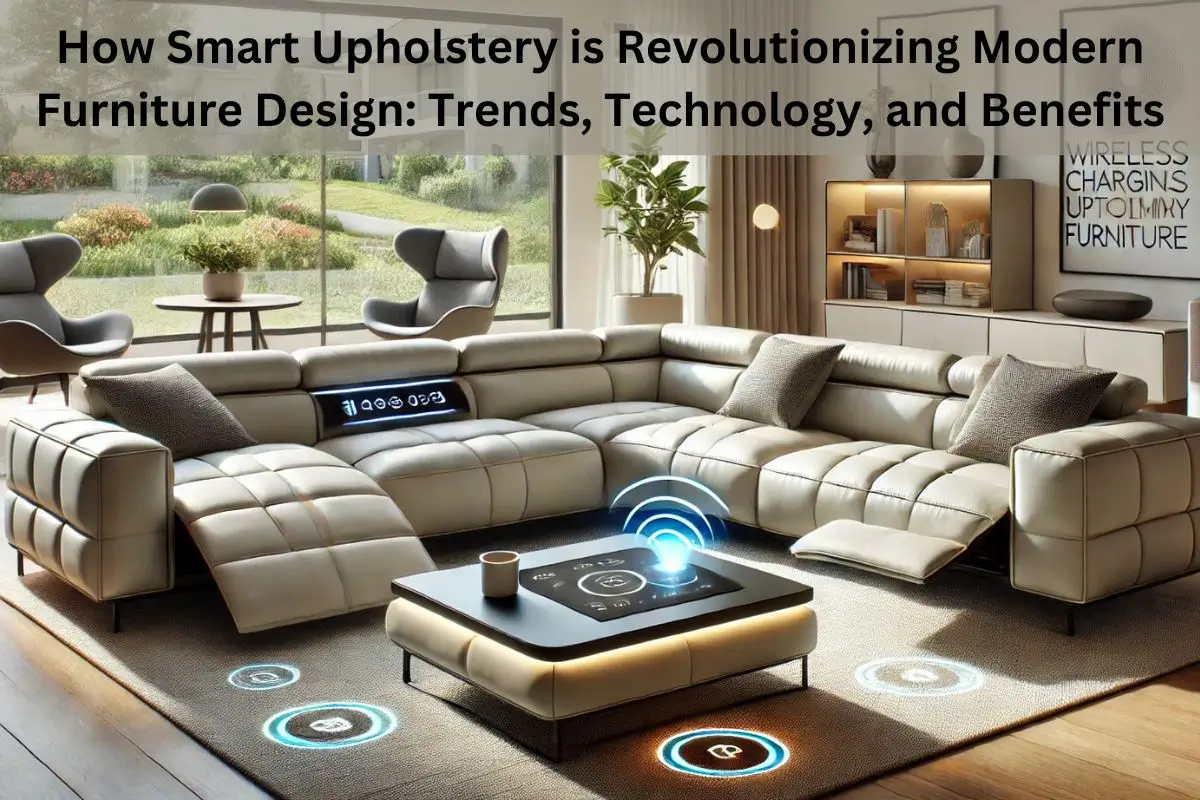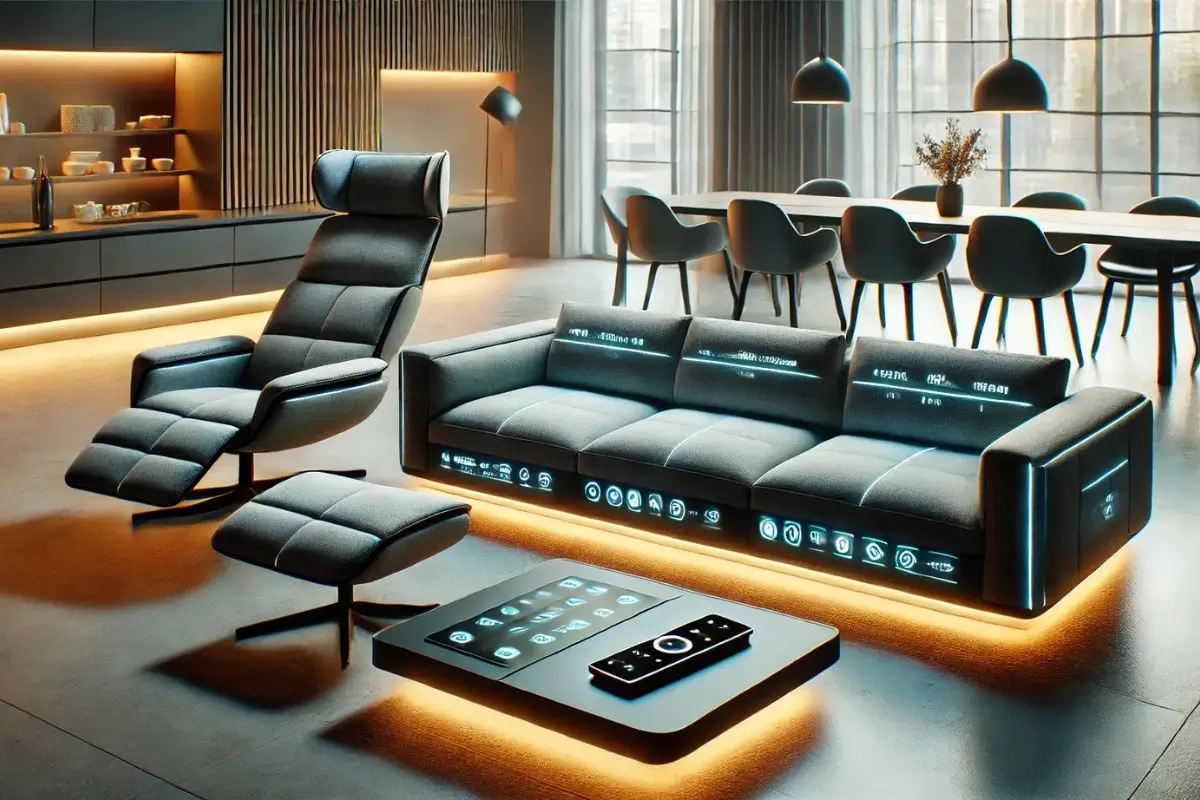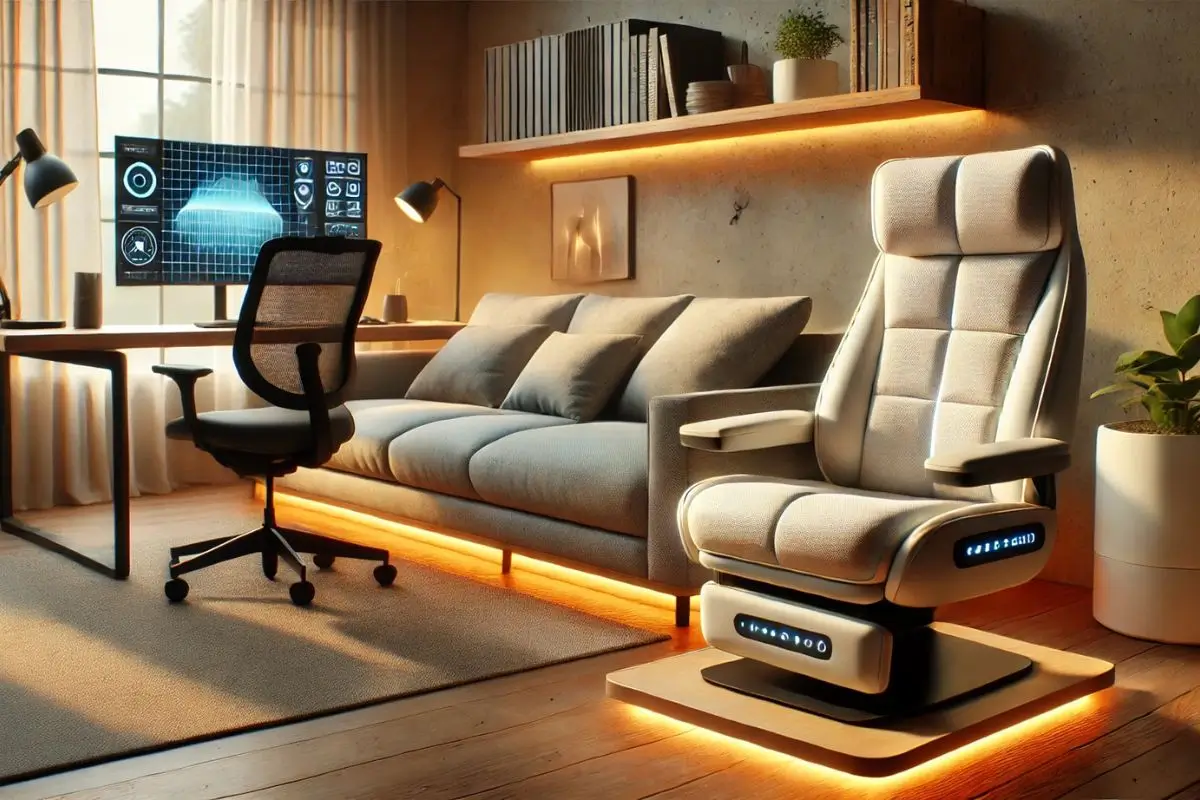Furniture design has come a long way from simple wood and fabric constructions to technologically advanced creations that cater to modern lifestyles. Smart upholstery is at the forefront of this revolution, combining cutting-edge technology, innovative materials, and sophisticated design. This fusion aims to enhance comfort, functionality, and aesthetics in ways we’ve never seen before. Smart upholstery refers to furniture equipped with intelligent features, from temperature regulation and health monitoring to app-controlled settings that adapt to user preferences.
In an era where homes are becoming smarter and more connected, furniture is evolving to keep up with these changes. Smart upholstery not only offers convenience but also addresses concerns like sustainability, space efficiency, and personalization. This blog explores how smart upholstery is revolutionizing modern furniture design, delving into trends, technology, and its numerous benefits. By the end, you’ll see why this innovative approach is shaping the future of furniture design.
What is Smart Upholstery? The Blend of Technology and Comfort
Smart upholstery refers to furniture that incorporates advanced technologies into its fabric, structure, or functionality to enhance the user experience. Unlike traditional furniture, which prioritizes form and comfort, smart upholstery integrates features like sensors, smart textiles, and IoT connectivity to add a layer of intelligence. For instance, some sofas come with built-in USB ports and wireless charging pads, while others offer temperature-controlled fabrics that adjust based on the environment or the user’s body temperature.
These innovations are designed not just for luxury but also for practicality. Health-focused furniture, such as chairs that monitor posture or mattresses with sleep-tracking capabilities, exemplifies the merging of technology with wellness. By blending cutting-edge materials like memory foam with digital tools, smart upholstery brings a new level of interactivity to our living spaces. This category of furniture is setting new benchmarks in how design can meet the needs of a tech-driven world.
Top Trends Shaping the Future of Smart Upholstery Design
Smart upholstery reflects current trends that prioritize functionality, sustainability, and personalization. Minimalistic and functional designs are in high demand, where furniture looks sleek while hiding its advanced features. Sustainable materials are another trend, with eco-conscious consumers favoring furniture made from recycled fabrics or biodegradable components that incorporate smart technologies.
Customization is also a key focus, with furniture designed to adapt to individual needs. Imagine a chair that automatically adjusts its lumbar support or a bed that changes firmness based on your sleeping position. Health and wellness-focused designs are gaining traction, offering features like anti-microbial surfaces and ergonomic supports.
These trends are driven by a growing desire for furniture that enhances both lifestyle and well-being. Designers are pushing the envelope by merging aesthetics with tech, creating pieces that not only look good but also transform how we interact with our living spaces.
Innovative Technologies Powering the Smart Upholstery Revolution
Technology is the backbone of smart upholstery, enabling furniture to deliver unprecedented convenience and innovation. Smart fabrics are one of the most exciting advancements, featuring materials that can react to external conditions like temperature, moisture, or pressure. Embedded sensors are another cornerstone, allowing furniture to monitor body metrics such as heart rate, posture, or sleep patterns.
Connectivity is a defining feature, with many smart upholstery pieces integrating seamlessly with IoT ecosystems. Furniture can now connect to apps, voice assistants, or even other smart devices, allowing users to control settings with ease. Advanced manufacturing techniques, like 3D knitting or robotic assembly, make these innovations possible while maintaining precision and quality.
From fabrics that clean themselves to chairs that recognize their users, the technological advancements in smart upholstery are transforming the way we think about furniture. These innovations ensure functionality without compromising on design.
Why Smart Upholstery is a Game-Changer: Key Benefits You Can’t Ignore
Smart upholstery offers numerous benefits that go beyond aesthetics. First and foremost, it enhances comfort by adapting to the user’s needs. Chairs and sofas with memory foam or posture-correcting sensors can significantly improve physical well-being. Some smart furniture even includes temperature-regulating features, ensuring year-round comfort.
Health and wellness are major focuses, with furniture designed to monitor sleep patterns, reduce pressure points, or even track health metrics. Sustainability is another benefit, as smart upholstery often uses durable, eco-friendly materials that reduce waste and extend the life of the product.
Additionally, smart upholstery provides unmatched personalization, allowing users to adjust settings like firmness or position via apps. The integration of energy-efficient features, such as low-energy heating, makes these pieces practical and sustainable. Overall, smart upholstery is not just a luxury but an investment in comfort, health, and modern living.
Applications in Modern Furniture Design
The versatility of smart upholstery makes it suitable for various settings. In residential spaces, smart sofas, recliners, and beds create connected living environments where users can control furniture settings through their smartphones. These designs are perfect for tech-savvy homes where every element integrates seamlessly.
In workspaces, ergonomic chairs equipped with posture-correcting sensors and adjustable features are transforming offices into healthier environments. Similarly, the hospitality industry benefits from smart seating options in luxury hotels, with furniture that offers personalized comfort settings for guests.
Healthcare is another area where smart upholstery shines. Medical chairs and beds equipped with pressure-relief systems and health-monitoring sensors are improving patient care. The adaptability of smart upholstery ensures it meets the needs of diverse users, from comfort at home to professional-grade functionality in specialized settings.
Overcoming the Challenges: The Road Ahead for Smart Upholstery
Despite its advantages, smart upholstery comes with its own set of challenges. One of the biggest hurdles is cost. Advanced technology and premium materials make these products expensive, limiting their accessibility to a broader audience. Durability is another concern, as integrating electronics into upholstery can increase the risk of malfunction or wear and tear.
User adaptability can also pose a challenge. Some users may find it difficult to navigate app controls or understand the functionality of smart furniture. Additionally, sustainability remains an issue, as electronic components can contribute to e-waste if not managed properly.
However, these challenges are not insurmountable. As technology advances and becomes more cost-effective, smart upholstery is expected to become more accessible, durable, and eco-friendly. Addressing these limitations is key to making smart furniture a staple in every home.
The Future of Smart Upholstery: What’s Next for Furniture Innovation?
The future of smart upholstery is incredibly promising, with advancements in AI and machine learning paving the way for even smarter furniture. Imagine a sofa that learns your seating preferences over time or a bed that adjusts to your sleep cycles automatically. These features are no longer far-fetched but are actively being developed.
Eco-friendly smart materials are also on the horizon, combining sustainability with high performance. As smart home ecosystems become more integrated, furniture will play a central role in creating seamless, connected environments. In addition, affordability is expected to improve as production scales and technology becomes more accessible.
From autonomous vehicles with smart seating to space-saving furniture that adapts to urban living, smart upholstery is poised to redefine modern furniture design. The possibilities are limitless, and the journey has just begun.
Conclusion
Smart upholstery is not just a trend but a transformative movement in modern furniture design. By integrating advanced technologies, sustainable materials, and personalized features, it offers unparalleled benefits that cater to today’s tech-savvy and comfort-driven consumers. While challenges like cost and durability exist, ongoing innovations are addressing these issues, making smart upholstery more accessible and practical for a wider audience.
As we move towards smarter homes and connected living, smart upholstery stands out as a key player in this evolution. Whether it’s improving health, enhancing comfort, or contributing to sustainability, this revolution in furniture design is shaping the way we live, work, and relax. Investing in smart upholstery is not just about keeping up with trends—it’s about embracing a future where technology and design work hand in hand to improve our lives.






